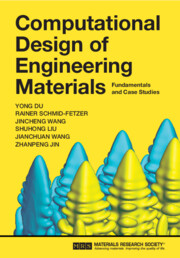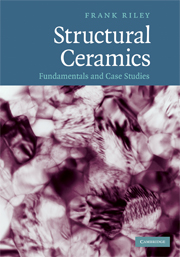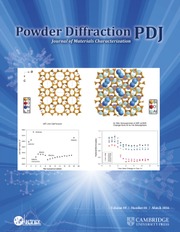Computational Design of Engineering Materials
Introducing state-of-the art computational methods, this book combines detailed explanations with real-world case studies to give a full grounding in the design of engineering materials. This book presents a wide spectrum of key computational methods, such as CALPHAD-method, first-principles calculations, phase-field simulation and finite element analysis, covering the atomic-meso-macro scale range. The reader will see these methods applied to case studies for steel, light alloys, superalloys, cemented carbides, hard coating and energy materials, demonstrating in detail how real-world materials are designed.
Online ancillary material includes input files for computational design software, providing the reader with hands-on design experience. Step-by-step instructions will allow you to perform and repeat the simulations discussed in the book. Aimed at both graduate and undergraduate students as well as non-specialist researchers in materials science and engineering, including ceramics, metallurgy, and chemistry, this is an ideal introductory and reference book.
- Presents state-of-the-art computational methods, using a multi-scale approach
- Includes detailed demonstrations on a variety of real-world case studies
- Features online ancillary with step-by-step instructions, to provide hands-on experience
Reviews & endorsements
‘Computational Design of Engineering Materials - an ambitious title for an ambitious book! But the authors match that expectation! They carefully explain atomistic models like density functional theory and molecular dynamics simulations before going to mesoscale approaches like cellular automaton, the CALPHAD, multi-phase-field and the phase-field-crystal methods. This fundamental part of the book is complemented by several chapters addressing case studies. They are selected from different materials like steels, Al- and Mg-alloys and superalloys and also from examples of different applications like hard coatings or energy materials. The book concludes with a section on future development focusing on ICME (Integrated Computational Materials Engineering) and MGI (Materials Genome Initiative). A ‘must have’ for students and engineer of the material community.’ Georg J. Schmitz, Access e.V
Product details
June 2023Adobe eBook Reader
9781316998427
0 pages
This ISBN is for an eBook version which is distributed on our behalf by a third party.
Table of Contents
- 1. Introduction
- 2. Fundamentals of atomistic simulation methods
- 3. Fundamentals of mesoscale simulation methods
- 4. Fundamentals of crystal plasticity finite element method
- 5. Fundamentals of computational thermodynamics and the CALPHAD method
- 6. Fundamentals of thermophysical properties
- 7. Case studies on steel design
- 8. Case studies on light alloy design
- 9. Case studies on superalloy design
- 10. Case studies on cemented carbide design
- 11. Case studies on hard coating design
- 12. Case studies on energy materials design
- 13. Summary and future development of materials design
- Appendix A
- Appendix B
- Appendix C.







